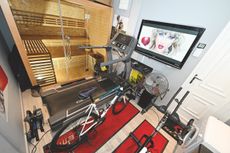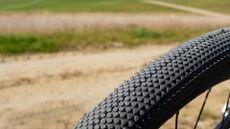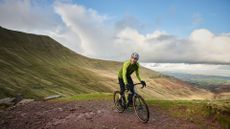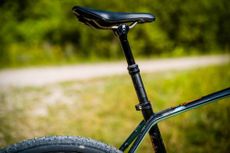Best gravel bikes 2023: our pick of the top models
Our pick of the best gravel bikes includes value options as well as outstanding bikes from our gravel bike of the year face-off


Best Gravel Bikes 2023: Jump Menu
Best value
1. Best for adventure
2. Best for versatility
3. Best value
High-performance
1. Best overall
2. Best for bikepacking
3. Best for racing
Advice
How to choose a bike
Gravel bike components
How we test
This year Black Friday falls on Friday 24th of November, and will close out after Cyber Monday on the 27th of November. Ahead of the annual sale, we're searching high and low for the best bike deals available, which you can find on our main hub page.
The Giant Revolt Advanced Pro won our Gravel Bike of the Year award 2023, but in reality, there's not one best gravel bike for all as it is such a broad category - what works best for you will depend on the type of riding you want to do, as well as how much you want to spend.
Here, we've covered some great all-rounder gravel bikes as well as some more specialist picks that will serve for gravel racing and bikes that are good for multi-day bikepacking trips. We've also got options from among the best budget gravel bikes.
Our picks come from our extensive testing and reviews of the best gravel bikes available, from the sub-$1,000 / £1,000 category up to premium gravel bikes with price tags above $10,000 / £10,000. We've also taken our top picks from our gravel bike of the year face-off between nine gravel bikes, all ridden and rated by multiple reviewers before we picked the winners.
We've more on how to pick the best gravel bike for your needs lower down on this page, but first here are six quick picks, then our selection of the best value gravel bikes, followed by the best high-performance machines, with links out to our comprehensive full reviews for each.
The Quick List
Best value
You can trust Cycling Weekly.

Best for adventure
The Diverge E5 Comp is a quality gravel ride. The Future Shock 1.5 front suspension system and big tire clearance add comfort, with room for 47mm 700c or 2.1 inch 650b rubber.

Most versatile
The Vitus Venon Evo does double-duty, with both road and gravel specs offered. The GR gravel spec comes fitted with 40mm tires, but you can fit up to 45mm, for a fast ride on gravel.
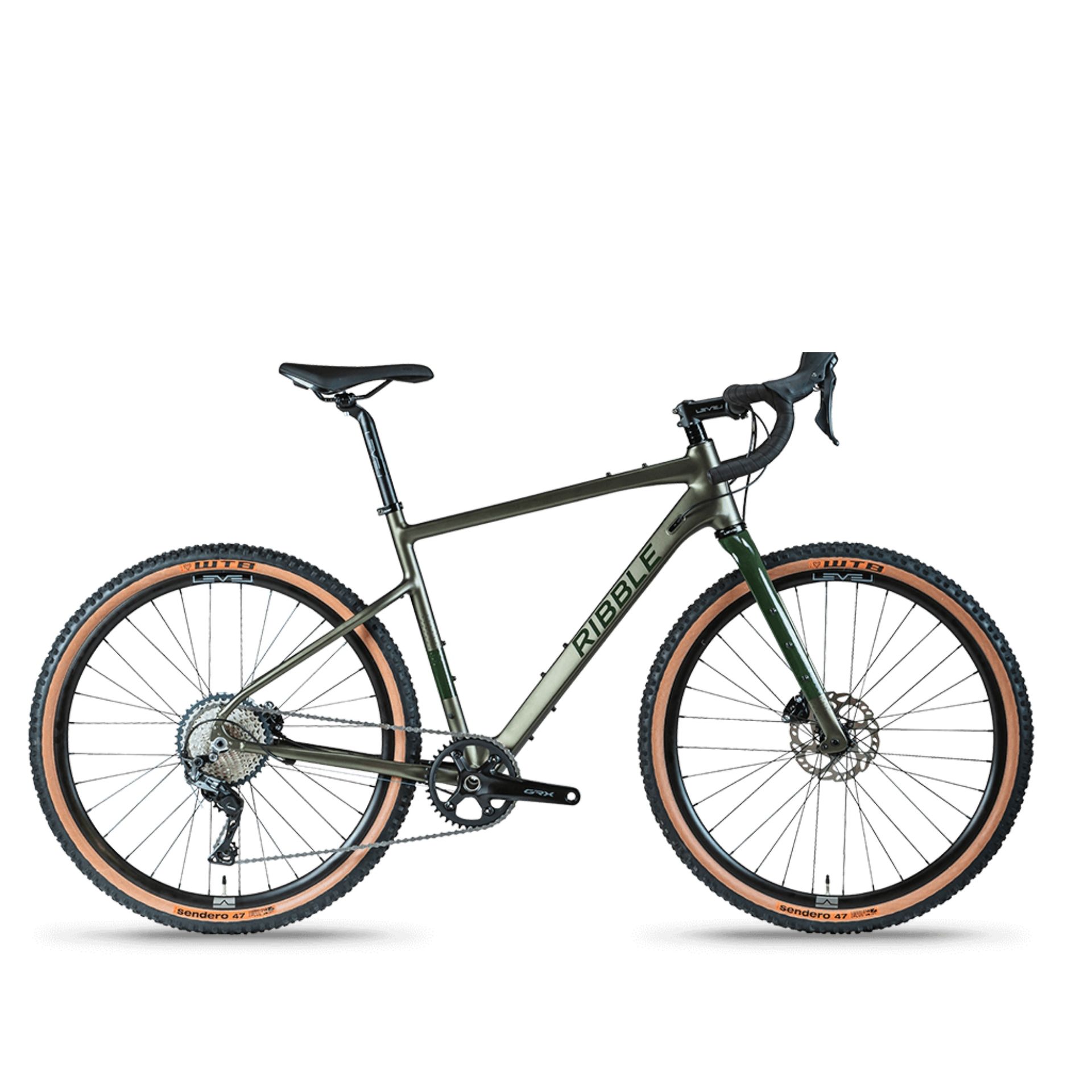
Most for your money
Ribble gives you good gravel tech with its alloy Gravel AL, including both 650b and 700c wheel options and plenty of gear mounts. You can choose your own spec, but this Shimano GRX400 provides plenty of gear range.
High-performance
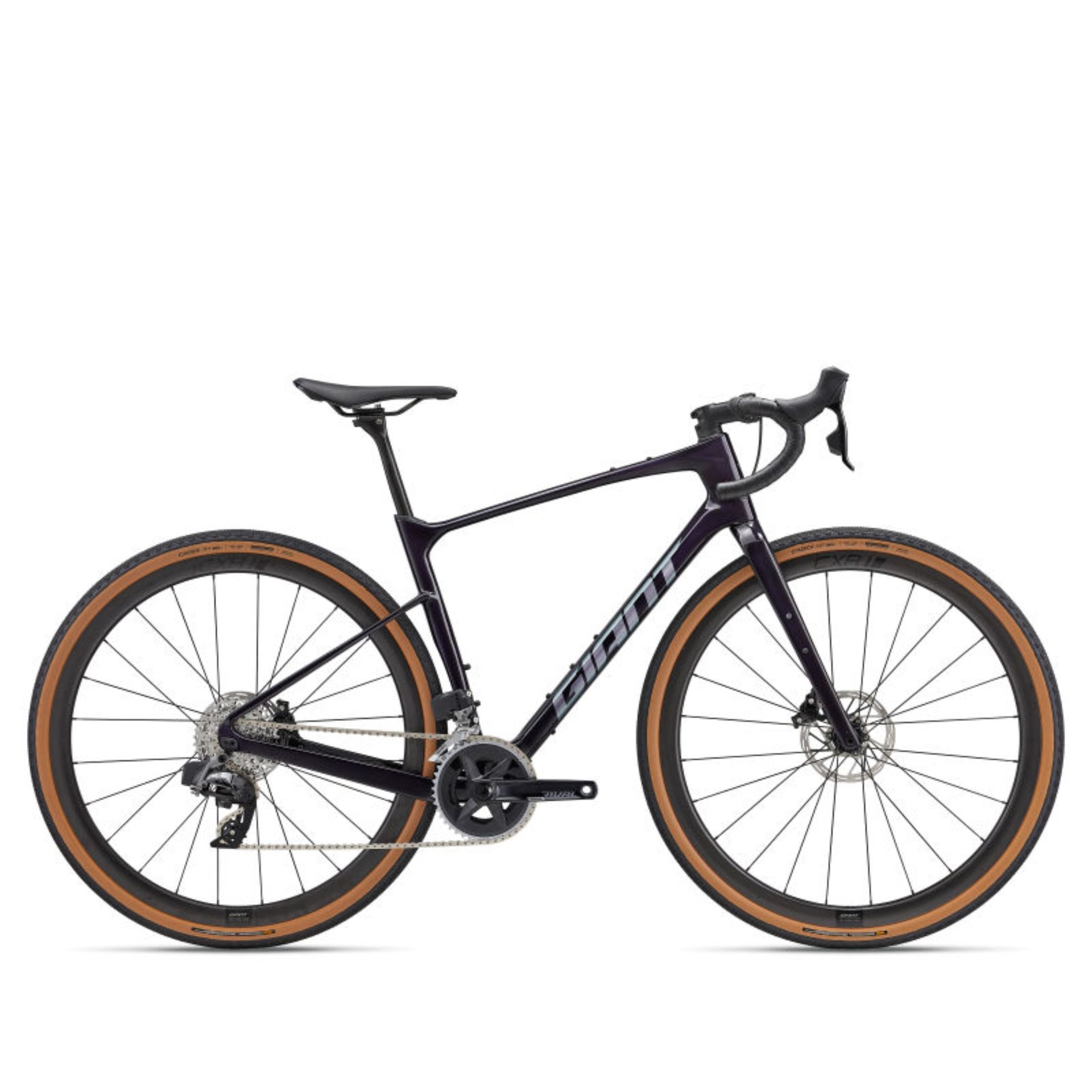
Best overall
Our Gravel Bike of the Year 2023, the Revolt has clever features like a flexing D-shaped seatpost that doesn't stop you swapping in a dropper and adjustable rear dropouts to fine-tune your ride.

Best for bikepacking
We think that the Checkpoint is a great option for gravel expeditions. It has plentiful mounts and storage and its IsoSpeed decoupler helps to add comfort to long ride days.
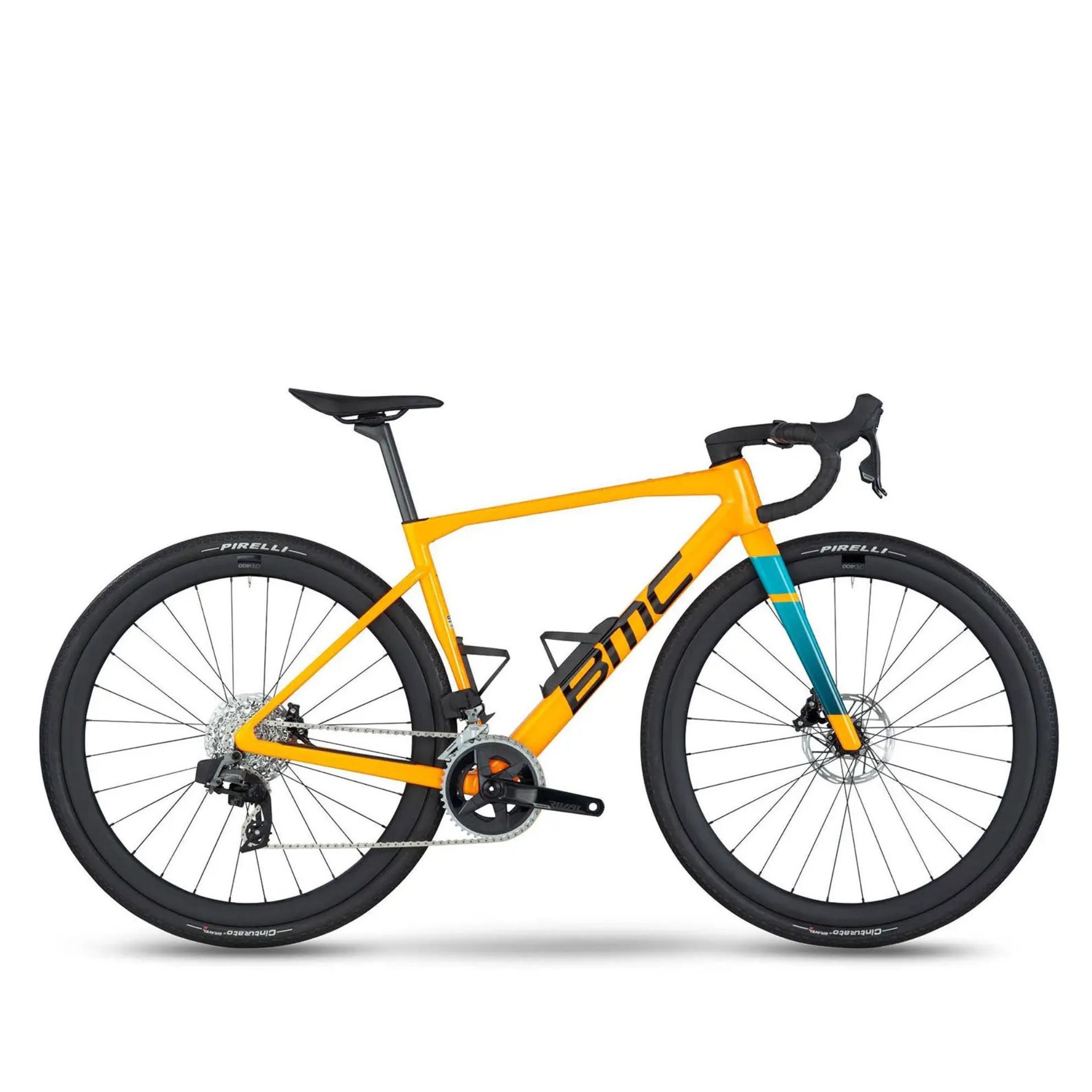
Best for racing
If fast gravel riding/racing is your thing, the Kaius ticks all the boxes. It's fast, with aero features and an aggressive ride position, but with the agility to tackle more twisty trails.
Best value gravel bikes 2023: Our picks
Best for adventure

The Diverge is a do-it-all machine that can handle on and off road adventures
Specifications
Reasons to buy
Reasons to avoid
If your riding leans towards the more adventurous end of the spectrum, exploring new trails, all-day epics and occasional multi-day bikepacking trips, then the Specialized Diverge Comp E5 is well suited to you.
It comes with a relaxed geometry and a high front end for a more comfortable riding position - with the caveat that we found it a little more difficult to weight the front tire sufficiently when really pinning the corners.
There's a full complement of mounts, with pairs under the down tube and on top of the top tube, as well as triple bosses on the fork legs. Full fenders and a pannier rack are also catered for if you prefer a more traditional luggage carrying and splash defending setup.
However, the most significant feature of the Diverge Comp E5 is the Future Shock 1.5, which is usually only found on carbon models. This does a good job of damping out some of the trail chatter and high-frequency bumps, but we found that it's not sufficient to replace front suspension, if you were considering this as an alternative.
Read more: Specialized Diverge Comp Carbon full review
Most versatile

The Vitus Venon Evo Force AXS is light and versatile
Specifications
Reasons to buy
Reasons to avoid
The Vitus Venon Evo combines a fast gravel bike and an endurance road bike in one all-road package, with Vitus selling GR specs geared towards gravel and RS specs for road use. We found the riding position is a good compromise between the upright and the aggressive.
This Force AXS XPLR 1x build is gravelly, with 40mm wide Michelin Power Gravel tires mounted on Prime Primavera 44 carbon wheels and clearance for 45s if wanted. Even so, the bike weighed just 7.9kg, making for lively progress even on trickier off-road. Swap in 28mm tires and you're good for endurance road rides too.
You do miss out on some mounting points typically found on the best gravel bikes, although no more so than many gravel race bikes, and the aero front end and fast ride make the Vitus Venon Evo a good option for gravel racing.
Read more: Vitus Venon Evo-GR Force AXS full review
Best Value

Ribble's Gravel AL Sport comes equipped with a reliable Shimano GRX drivechain
Specifications
Reasons to buy
Reasons to avoid
The Ribble Gravel AL Sport has 47mm tires on 650b wheels, although you can also spec 700c wheels. The 650b option makes it a highly capable go-anywhere option that doesn't break the bank.
The alloy frame is long and low, with a slack headtube. longish reach and short stem. There are loads of mounting points, although oddly not those needed for a rack. The 2x10-speed Shimano GRX 400 build is the bottom of the range, but still offers excellent performance and ratios down to 30x34t to tackle the rough stuff.
Although not light, we found that the bike still felt quick and it coped well with both degraded tarmac and rough tracks, although the grip tended to wane when we ventured on to muddier passages.
Read more: Ribble Gravel AL Sport full review
Best performance gravel bikes 2023: Our picks
Best overall gravel bike

Giant Revolt won the Gravel Bike of the Year award 2023
Specifications
Reasons to buy
Reasons to avoid
The Giant Revolt won our Gravel Bike of the Year title in 2023. It's a gravel bike that covers the broad spectrum of gravel riding really well. Its saddle comfort is augmented by a D-shaped seatpost with a claimed 12mm of flex, but it fits in a standard 30.9mm round seat tube, so you can fit a dropper if you ride more technical terrain.
The rear dropouts feature two-position adjustable geometry, which lets you choose between a more agile ride for racing or wider clearance with increased stability. You also have mounting points for bikepacking, including on the fork legs.
The frame soaks up bumps really well too both front and rear, although we'd have preferred a shorter head tube for more versatility in the bike's set-up.
We were impressed with the value offered as well, with the spec tested including Shimano GRX RX815 Di2 electronic shifting and Giant carbon wheels.
Read more: Giant Revolt Advanced Pro 0 gravel bike full review

Trek's Checkpoint SL7 is ideal for long rides and bikepacking
Best for bikepacking
Specifications
Reasons to buy
Reasons to avoid
The Checkpoint majors on mounts, including on the fork legs, as well as storage in Trek's down tube cubbyhole for tools and a tube. The frame allows you to fit 2.1 inch 650bs and the IsoSpeed seat tube decoupler provides added comfort when in the saddle.
We thought that the Checkpoint's long wheelbase and high fork trail provided great stability for longer rides, without going overboard. It's still quick enough though, despite its carrying capacity and remained good to ride whether fully laden for bikepacking or stripped down for a short blast.
Our long-term test concluded that the Checkpoint is best suited for crushing long-distance rides with its reassuring handling, comfy ride characteristics and considered componentry.
Read more: Trek Checkpoint SL 7 gravel bike full review

BMC Kaius 01 gravel is perfect for racing
Best for gravel racing
3. BMC Kaius
Our expert review:
Specifications
Reasons to buy
Reasons to avoid
At the other end of the gravel spectrum from the Trek Checkpoint, the BMC Kaius is an out-and-out gravel race bike, with a low ride position and aero frame that borrows from the BMC Teammachine road race bike.
The ride feels similar to BMC's road bikes as well and you get a pared-down road bike-style set of mounting points that doesn't even include fender / mudguard bosses. There is room for 44mm tires though, which might help mitigate the lack of comfort in the stiff, race-tuned frame.
When we tested it we enjoyed the novel combination of a short wheelbase and low bottom bracket, which gave the bike snappy, precise handling and prodigious speed.
This lower spec model is more affordable than the top level of the BMC Kaius, but is still more expensive than the highest spec available for the Giant Revolt though.
Read our review of the BMC Kaius in our Gravel Bike of the Year coverage.

The Scott Addict 10 Gravel bike offers good value and great performance
4. Scott Addict Gravel 10
Our expert review:
Specifications
Reasons to buy
Reasons to avoid
The Addict Gravel is designed for speed rather than off-road load lugging, but still with a longer wheelbase and higher stack than other gravel race bikes like the BMC Kaius. This results in a well-balanced ride that's as good for fast, technical riding as for multi-day bikepacking, despite the absence of fork leg mounts.
We loved Scott's paint job on the Addict Gravel and the bike is good value, with the lower spec SRAM Rival AXS-equipped bike as reasonably priced as bikes from brands that are normally more value-oriented than Scott.
Read our review of the Scott Addict Gravel 10 in our Gravel Bike of the Year coverage.

The Topstone features Cannondale's Kingpin suspension system
Specifications
Reasons to buy
Reasons to avoid
The Cannondale Topstone Carbon has a geometry that, on paper, looks aggressive, but is more forgiving than you'd expect. It also includes Cannondale's now-simplified and lower-weight Kingpin rear suspension. This provides 30mm of travel from a pivotless design which improves rear-end traction over rougher ground, although it doesn't aid front-end comfort. For that, you'll need the Topstone Carbon Lefty with its suspension fork.
There's the option to spec Cannondale's Smart Sense lighting system, with its rearview radar. Cannondale's prices are competitive too, despite the high-tech frame features.
Our test of the Topstone 3 concluded that it is “a sublime blend of exuberance, speed and comfort” that gives a poised and playful ride, but it is also perfectly at home carrying overnight gear on multi-day epics thanks to multipole mounting points.
Read more: Cannondale Topstone Carbon 3 full review

The Crux is lightweight, stripped back and ready to race
6. Specialized Crux Pro
Specifications
Reasons to buy
Reasons to avoid
More reasonably priced than the S-Works Crux, the Crux Pro is still very light and has the same responsive geometry as the top spec bike. That results in lightning-fast acceleration, although the 38mm tires result in a jittery ride over rougher surfaces.
You could plump things up to 2.1 inch 650b tires though, which should help add a touch more comfort and extra traction and the round seatpost allows you to fit a dropper or suspension seatpost.
We reckon that the Crux fits the bill for riders who want agile performance on gravel, but with the ability to put down the power for outright speed.
Read more: Specialized Crux Pro full review
ADVICE
Gravel bikes: all you need to know
What are gravel bikes?
Gravel bikes are drop-bar bikes that allow you to veer off paved roads and onto more exciting terrain.
From racing to bikepacking, there'll be a best gravel bike for you, built ready to cope with the demands of tricky terrain and longer, multi-day off-road rides.
As with all bikes, it's vital that you get the best bike to fit you, and it doesn't need to be gender specified. But if you are after a women's specific model, which often includes smaller sizes and different touchpoints like a wider saddle and narrower bars, you might want to check out best women's gravel bikes for off-road adventures page.
If you're juggling a tighter budget, but still want the best, our page dedicated to the best budget gravel bikes: gravel bikes under £1,000/$1500 is ideal for getting the best value for money adventures on two wheels.
Born with the spirit of adventure, the best gravel bikes sit somewhere between the best endurance and sportive bikes and the best cyclocross bikes, with a blend of the best hardtail mountain bikes. They're nimble on paved sections of road compared to fat-tyred MTB steeds, but confidence-inspiring when it comes to tackling rough surfaces when compared to their slick-tired road-going siblings.
These bikes are ideal for mixed-terrain adventures; gravel paths, broken tarmac, fire roads, and of course unpaved dirt tracks. Taking cues from their cyclocross cousins and MTB siblings, don't let the drop bars fool you, these bikes can tackle some pretty technical terrain, including flowy mountain bike trails.
This crossover discipline can add a slight confusion in the cycling gear department too, e.g to Lycra or not to Lycra. Thankfully our guide on the best gravel bike clothing: cycling kit for your gravel ride should sort out any kit woes.
The best gravel bikes will come with wide tyres, with room for extra mud clearance, and disc brakes as standard. Expect anything up to 47c or more on either 700c or 650b wheels.
Mounts for pannier racks and extra storage will often feature on the best gravel bikes, as will the option for fitting mudguards. In fact, that's probably the biggest difference between gravel and cyclocross bikes, along with bottle cage mounts.
Are gravel bikes any good on the road?
Compared to road bikes, you'll also find wider and lower gear ratios on the best gravel bikes, which will help you ride over loose or hilly terrain especially when carrying bikepacking bags if you're gearing up for multi-day expeditions.
In general, the best gravel bikes will also have a lower bottom bracket than a cyclocross bike, helping to provide enhanced stability on rocky, rooty and rough terrain. For more details on exactly what the differences are, you might find our gravel vs cyclocross bikes: what is the difference page really helpful.
For those wanting to head off the beaten track, but worried about keeping up, you might want to consider an electric version. Electric gravel bikes give you all-terrain capability and confidence-inspiring stability, but with some additional assistance.
Why are gravel and adventure bikes so popular?
If you’ve ever gone out on a ride on your best road bike and noticed unpaved roads, fire trails or alluring singletrack as you passed, wondering where they lead but hesitating to head off the tarmac, then a gravel bike or adventure road bike may be for you.
These bikes aim to meld on-road efficiency with off-road capability, so you'll find overlaps in design features with both road and cyclocross bikes, as well as incorporating elements from mountain bike technology. When you're shopping for your first gravel bike, as standard you should expect disc brakes and clearance for wider tyres.
Whereas cyclocross bikes are designed with short, muddy races in mind, gravel and adventure bikes take longer unpaved rides into account. You'll still find race-orientated builds in the gravel category for gravel racing, alongside adventure bikes that feature additional clearance and mounts to accommodate luggage and often even wider tyres for more remote journeys.
Does the frame and fork material matter on a gravel bike?
As with road bikes, gravel bikes can be made from carbon, aluminium, titanium or steel.
Carbon and aluminium are the two most commonly used frame materials, and all the bikes in this guide are made from one or other of these two options. Carbon tends to be more expensive and lighter whilst aluminium frames are heavier but cheaper. This means that for a similar price, you can expect better components on an aluminium-framed bike than on one with a carbon frame so you might have to decide where your priorities lie when choosing between the two.
The big advantage of using carbon as a frame material is that it can be added exactly where it is needed for strength and stiffness or removed where it is not needed to lower weight and fine-tune compliance.
Titanium gravel bikes are less widely available, with aficionados often describing the ride quality as being more ‘lively’ than carbon or aluminium whilst also offering low weight and high strength as being amongst its qualities.
High-end steel frames offer an almost titanium-like ride, albeit with a bit of a weight penalty whilst at the lower end some manufacturers offer steel bikes as a potentially more durable and repairable option to aluminium.
Regardless of frame material, most gravel bikes have carbon forks as the carbon layup can be tuned to provide some degree of protection against trail vibrations which is important at the front end of an off-road bike.
How does gravel bike geometry differ from road bikes?
Stability and handling are key when it comes to riding off-road. Expect to see a lengthened wheelbase, slack headtube angle and lower bottom bracket compared to road bikes, all of which aid with technical terrain and steeper descents.
The rider position is typically more upright than on road bikes, both for comfort over long rides and to allow the rider to move their weight around more easily when negotiating off-road obstacles.
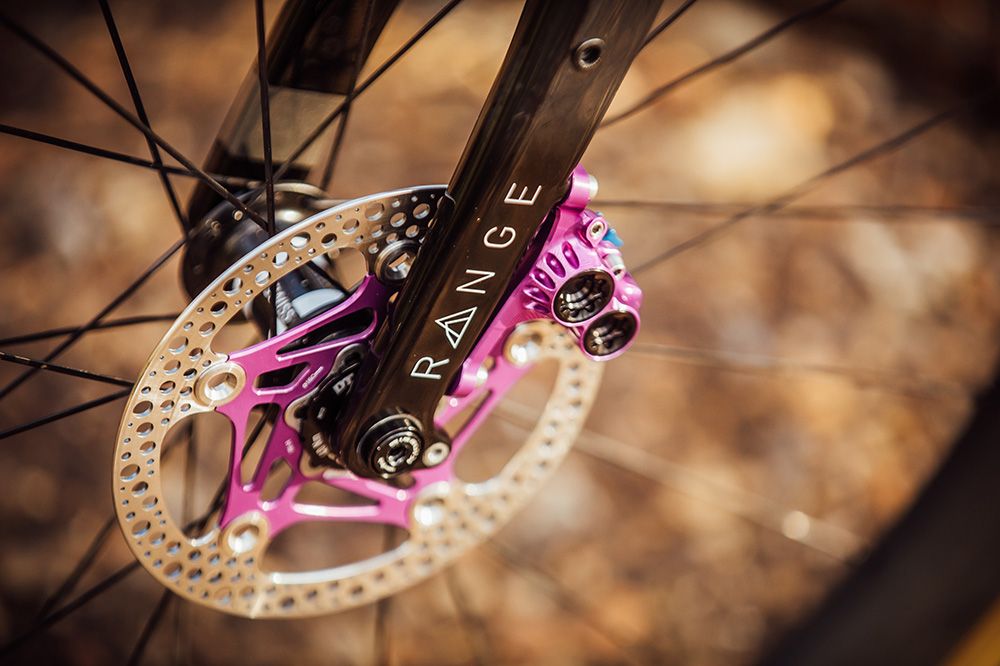
12mm thru-axle and hydraulic discs on a gravel bike
Do gravel bikes have other specialised features?
Thru-axles and disc brakes have quickly become standard on gravel (and many road) bikes, technologies borrowed from mountain biking. You can also find front and rear suspension, although these aren't commonplace yet.
The norm is 12mm thru-axles, which make for easier disc brake alignment and rigidity. Rear-axle spacing for disc brake wheels is typically 142mm (thru-axle), or occasionally 148mm Boost spacing for stronger wheelsets.
More adventure or utility-centric frames will come with mounts for racks and fenders so that the bike can be used as a sturdy commuter or year-round road bike. At the most extreme end of the adventure bike market, fork leg mounts and extra frame mounts are becoming increasingly common for even more luggage carrying options.
Gravel bike and adventure bike components
There is a wide range of specialist gravel bike components which add extra features for gravel rides that are different from those you'd find on road bikes. Below are a few things to consider when looking for the best gravel bike for your needs.
What are the best tires for gravel and adventure bikes?
You can find adventure road and gravel bikes shod with tires of pretty much any width between a 28c and 47c, plus tires measured in inches on 650b wheel builds!
The best gravel bike tires can dramatically improve your ride. There's a real range of tread patterns available, which can add extra grip for muddy conditions or lower rolling resistance if you're mixing in more tarmac and cater for everything in between.
We think changing your tires is one of the best gravel bike upgrades you can make. Going tubeless is also a great option to improve comfort and reliability.
In the UK, you're likely to come across patches of wet mud or loose dirt year-round, so a more aggressive tread can be useful in those situations to help you maintain grip, albeit at the expense of road speed.
But in the US, gravel roads can range from well-graded packed dirt that almost resembles tarmac, to the crushed and graded limestone you find in the Flint Hills of Kansas.
Finding the right tires for your riding terrain may take some experimentation, and don't be afraid to try something with more or less tread than you're used to. You might also want to change your tires between summer and winter to get the best width and tread pattern for the conditions.
Most gravel and adventure bikes are specced with tubeless or tubeless-ready tires and rims, ready for conversion to a tubeless set-up. Rather than having to replace an inner tube every time you flat, the sealant in the system will (in theory) plug any punctures from sharp objects like thorns, which is a real advantage when it comes to riding off-road.
You may need to re-inflate the tire a little if you have a puncture. Tubeless tire plugs can get you riding quickly, but make sure you're equipped with a spare tube and full tubeless repair kit for more serious tire damage.
What are the best gearing options for gravel and adventure bikes?
Adventure road bikes and gravel bikes are designed to be ridden on the road as well as off, so you'll typically find a wide gear range to allow both efficiency and speed on the road, as well as enough gears to cope with loose and steep terrain off-road.
The choice between a double or single chainring up front is usually down to rider preference. A 1x (one-by) set-up gives ultimate simplicity and can allow for greater tyre clearance, but sometimes at the cost of wider jumps between ratios, although the latest 12 and 13-speed groupsets go some way to avoiding this.
Double chainrings offer more options for riders who prefer to spend more time on smoother terrain or on the road and may give you a greater overall range with smaller jumps between ratios.

A 1X drivetrain keeps it simple and can allow for greater rear tire clearance
Gravel bikes often feature a drivetrain that goes below 1:1 for off-road climbing and load carrying. That might be via a 1x set-up like SRAM XPLR with a cassette that goes to 42 teeth or greater or a two-ring supercompact chainset with 48/32 or 46/30 chainrings paired with an 11-32 or 11-34 cassette. You'll even find "mullet builds" that mix a road chainset with an MTB cassette and rear derailleur for ultra-low gearing, as low as 38x52t.
Read our guide to gravel bike gearing for more.
What pedals are best suited to gravel and adventure bikes?
Pedal choice is a matter of personal taste and will be dependent on your riding style, but check out our guide to the best gravel bike pedals for advice. If you ride predominantly on roads and well-maintained paths where you rarely need to put a foot down, then road cycling shoes, clipless pedals and cleats may be a good choice.
On the other hand, more demanding off-road riding may mean that you need to dismount and walk with the bike or put a foot down for stability. In this case, gravel bike shoes and two-sided gravel bike pedals with grippy treaded soles and recessed cleats derived from mountain bike systems may be a better choice for their ease of walking and easier foot engagement with the pedal.

Mountain bike style pedals make walking, mounting and dismounting easier
What components should I expect to find on the best gravel bikes?
Adventure and gravel bikes use disc brakes for their better modulation and more consistent stopping in dry, wet and muddy conditions. This also has a really positive impact on wheel rim longevity compared to rim brakes for off-road riding.
On higher-value models, the brakes will be hydraulic, while budget bikes typically have mechanical callipers. With Shimano's GRX and SRAM's gravel-specific groupsets available with hydraulic discs only, this tends to be the preference. You'll occasionally find mechanical disc brakes on adventure bike builds, where long-distance riders find them easier to maintain and repair in more remote situations.
Different types of handlebars are also worth considering on adventure bikes. Again, we've got a guide to the best gravel bike handlebars for more info.
Flared bars are generally accepted as a good upgrade to give greater stability in the wider drops for rough terrain and descending off-road. The wider the flare, the easier it is to fit a handlebar bag on the front of the bike and still be able to fit your hands on the drops and brakes at the same time. Raised bars such as the Specialized Hover Bar also help to give more clearance over the front wheel for smaller riders, as well as providing a more upright riding position.
With a lack of innovation-quashing UCI rules in the gravel sector, more ambitious designs are being tested, like the radical double-decker bar on the Canyon Grail, designed to add additional compliance to the ride.

Canyon's double-decker handlebar certainly divides opinion
Short travel suspension forks like the RockShox Rudy Ultimate XPLR and the Cannondale Lefty Oliver are also an option that is sneaking into gravel bike design.
How we test
We have a dedicated team of testers here at Cycling Weekly, whose job is to review a whole range of cycling products and to write objective reviews of their experience of using them day in, day out in a whole range of conditions.
With huge experience, they're really well placed to compare products, identify their strengths and weaknesses and bring you an honest, unbiased assessment of how they perform.
Testing gravel bikes calls for the logging of plenty of miles - and our testers do just that. Depending on the bike, routes range from technical mountain bike-style trails to multi-day bikepacking adventures and plenty in between. We also make sure that we test the bikes on paved roads, given that many riders will use gravel bikes for commuting and winter riding and many gravel rides will involve some tarmac as well.
While out riding we asses the bikes across a range of factors, including comfort and handling, suitability for a variety of gravel terrain and bikepacking, as well as the quality and durability of components and the bike's overall value for money.
With Black Friday coming up on November 24th and running until the 27th, all the major retailers are already starting their discounts. On the tech side of things, we’ve rounded up the best Black Friday Wahoo deals over here and the best Garmin deals over here.
More generally, we have specific hub pages for power meter deals and bike computer deals. With the nights drawing in, we’ve also picked out the best bike light deals as well
Beyond that, we’ve got a hub on the best Black Friday cycle clothing deals, deep winter glove deals and our top picks from Adidas’ Black Friday bike kit deals.
And with Christmas coming up, we absolutely have a page on the best kids’ bikes deals - from balance bikes to fully equipped gears.
Get The Leadout Newsletter
The latest race content, interviews, features, reviews and expert buying guides, direct to your inbox!

After winning the 2019 National Single-Speed Cross-Country Mountain Biking Championships and claiming the plushie unicorn (true story), Stefan swapped the flat-bars for drop-bars and has never looked back.
Since then, he’s earnt his 2ⁿᵈ cat racing licence in his first season racing as a third, completed the South Downs Double in under 20 hours and Everested in under 12.
But his favourite rides are multiday bikepacking trips, with all the huge amount of cycling tech and long days spent exploring new roads and trails - as well as histories and cultures. Most recently, he’s spent two weeks riding from Budapest into the mountains of Slovakia.
Height: 177cm
Weight: 67–69kg
-
 Castelli winter jacket reduced by 44%, Specialized shoes reduced by 50% - here’s my top picks from the January sales
Castelli winter jacket reduced by 44%, Specialized shoes reduced by 50% - here’s my top picks from the January salesBig savings on Specialized S-Works helmets, Vittoria tires, Garmin smartwatches and more
By Luke Friend Published
-
 My Training Space: 'I jump off my bike into the sauna – heat is no longer a limiting factor for me!'
My Training Space: 'I jump off my bike into the sauna – heat is no longer a limiting factor for me!'TT veteran, Ironman and CW reader Keith Murray gives us a tour of his Taylor Swift-resounding garage
By David Bradford Published
-
 Best gravel bike shoes and cyclocross shoes 2023: ridden and rated
Best gravel bike shoes and cyclocross shoes 2023: ridden and ratedBest gravel bike shoes and cyclocross shoes for riding and running off-road
By Hannah Bussey Last updated
-
 Best gravel bike tires 2023 for extra grip, volume and speed
Best gravel bike tires 2023 for extra grip, volume and speedWhen it comes to gravel bike riding, tires are all important. Here's our pick of the best gravel tires on the market to suit different terrain, conditions, frame clearances and budgets.
By Katherine Moore Last updated
-
 Best budget gravel bikes 2023: get off the beaten track without spending the earth
Best budget gravel bikes 2023: get off the beaten track without spending the earthLooking for the best budget gravel bikes? Here's our pick of lower priced options
By Katherine Moore Last updated
-
 Best handlebars for gravel bikes 2023: flared bars for off-road riding
Best handlebars for gravel bikes 2023: flared bars for off-road ridingChoosing the best handlebars for gravel bikes just got more exciting, with many new models entering the market. Here's a few of our favourites from modest designs to some really exciting new concepts
By Katherine Moore Last updated
-
 Best electric gravel bikes 2023: dirt loving drop bar e-bikes with added oomph
Best electric gravel bikes 2023: dirt loving drop bar e-bikes with added oomphCould electric gravel bikes be the best and most versatile e-bikes on the market?
By Katherine Moore Last updated
-
 Best gravel bike wheels 2023: options for your gravel or adventure bike
Best gravel bike wheels 2023: options for your gravel or adventure bikeWhat are the best wheels for your gravel or adventure bike? We round up the best options for you.
By Katherine Moore Published
-
 Gravel bike upgrades: the best improvements for your gravel bike
Gravel bike upgrades: the best improvements for your gravel bikeFrom quick and easy wins to significant component changes, here's our pick of the best gravel bike upgrades you can make
By Katherine Moore Last updated

